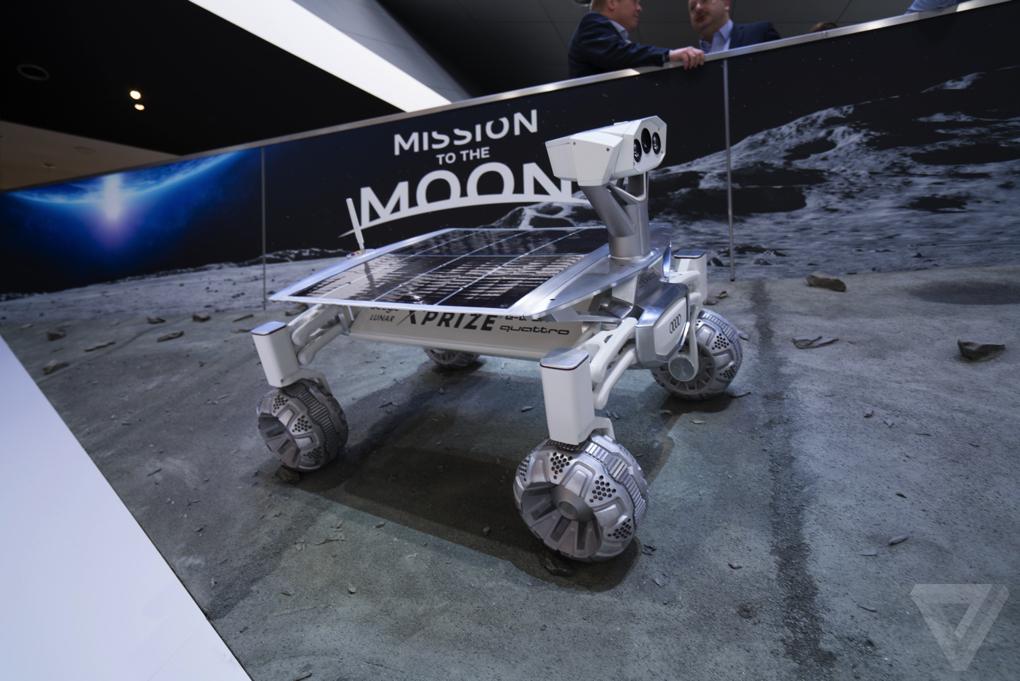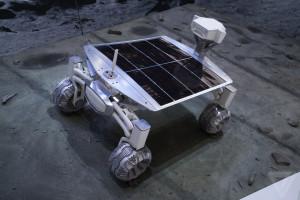 It’s been over 40 years since humans have been to the moon, but the idea of going back has been increasingly popular lately. It’s essentially a new space race: out of the many international space agencies and private companies talking about returning to the moon, who will actually be the first? One thing seems likely – when we do return to the moon, 3D printing will almost certainly be involved. The technology has been part of just about every discussion of the next moon landing, with ideas ranging from actual 3D printed moon bases to 3D printed spacecraft that will help us get there.
It’s been over 40 years since humans have been to the moon, but the idea of going back has been increasingly popular lately. It’s essentially a new space race: out of the many international space agencies and private companies talking about returning to the moon, who will actually be the first? One thing seems likely – when we do return to the moon, 3D printing will almost certainly be involved. The technology has been part of just about every discussion of the next moon landing, with ideas ranging from actual 3D printed moon bases to 3D printed spacecraft that will help us get there.
With the motivation provided by the Google Lunar XPRIZE, it seems probable that the next moon landing will be sponsored by a private company rather than a governmental space agency. The XPRIZE competition, which was introduced all the way back in 2007, will award $20 million to the first company to land a privately funded rover on the moon, travel 500 meters, and transmit high definition images and video back to Earth. Companies have until the end of this year to announce their verified launch contracts, and missions must be completed by the end of 2017. Several of the companies who have entered the competition are incorporating 3D printing into their plans, but perhaps none are using the technology more than German team Part Time Scientists.
The team is being sponsored by Audi, which has invested a lot in 3D printing technology. At the North American International Auto Show, which opened today in Detroit, Audi is debuting a prototype of the Audi Lunar Quattro, the rover that Part Time Scientists will send to the moon. The Lunar Quattro is small, sturdy and almost entirely 3D printed from aluminum and titanium. The team’s goal is not just to travel the 500 meters required by the contest, but to travel 2.3 kilometers from their planned landing site to the Lunar Roving Vehicle (LRV) that the Apollo 17 mission left behind in 1972.
 Visiting the LRV, says Part Time Scientists CEO Robert Böhme, is their team’s main goal, although winning the XPRIZE would be a welcome bonus. No one has seen the LRV since it was left behind, and Part Time Scientists wants to see how well it has held up over decades of harsh moon conditions. What they learn could provide valuable information on how best to design and manufacture future lunar equipment.
Visiting the LRV, says Part Time Scientists CEO Robert Böhme, is their team’s main goal, although winning the XPRIZE would be a welcome bonus. No one has seen the LRV since it was left behind, and Part Time Scientists wants to see how well it has held up over decades of harsh moon conditions. What they learn could provide valuable information on how best to design and manufacture future lunar equipment.
“You can get a great deal of knowledge from materials science to learn what works and what doesn’t,” says Böhme. “Long-term exposure, what materials can you use?”
Hopefully, some of those materials are already on the moon. Part Time Scientists wants to build a 3D printer that can print objects using lunar soil, which is rich in aluminum, titanium and magnesium. Constructing parts using materials native to the moon will not only make them more durable to lunar conditions, but will save time by allowing the parts to be built onsite rather than shipped from Earth.
They’re not the first company to consider this idea; we’ve already seen a 3D printer launched into space and docked at the International Space Station to experiment with printing parts in space and ultimately on Mars. It makes sense; what other manufacturing method is portable and efficient enough to bring to another planet? Böhme thinks that 3D printing could go a long way towards enabling astronauts to “live off the land” of the moon.
“If you bring the right technology back to the Moon, you can pave the way for more exploration,” he said. “And not just exploration, but also to find a commercial benefit for future missions. It’s really hard to justify a lunar mission now, even if you get it down to $30 million.”
The ultimate goal of the XPRIZE competition is to justify repeated missions to the moon. A lot of potential research opportunities are there, and the resources on the lunar surface could be incredibly valuable to humanity. Regardless of which team makes it there first, the results of this 10-year competition are going to be big news for science and, potentially, manufacturing. Discuss this story in the Audi Moon 3D Printing forum on 3DPB.com.
[Images: The Verge]Subscribe to Our Email Newsletter
Stay up-to-date on all the latest news from the 3D printing industry and receive information and offers from third party vendors.
Print Services
Upload your 3D Models and get them printed quickly and efficiently.
You May Also Like
The Dental Additive Manufacturing Market Could Nearly Double by 2033, According to AM Research
According to an AM Research report from 2024, the medical device industry, specifically in dentistry, prosthetics, and audiology, is expected to see significant growth as these segments continue to benefit from...
Heating Up: 3D Systems’ Scott Green Discusses 3D Printing’s Potential in the Data Center Industry
The relentless rise of NVIDIA, the steadily increasing pledges of major private and public investments in national infrastructure projects around the world, and the general cultural obsession with AI have...
AM Research Webinar Explores Continuum’s Sustainable Metal Additive Manufacturing Powders
Metal additive manufacturing (AM) powder supplier Continuum Powders is working to develop solutions that empower industries to reduce waste and optimize their resources. An independent life cycle assessment (LCA) of...
3D Printed Footwear Startup Koobz Lands $7.2M in Seed Round
California-based Koobz is focused on reshoring the U.S. footwear supply chain with advanced manufacturing processes, including 3D printing. The startup just announced that it has added $6 million to its...


































